Home renovations can be both exciting and challenging, especially when you have a vision for transforming a house into your dream home.
This is an inspiring renovation project in Co Down, Northern Ireland, where Allison Cordner and her family embarked on a journey to turn a 1970s house with an unconventional layout into a modern, comfortable space. Discover how this “upside down” house was transformed from top to bottom, overcoming planning hurdles, design choices, and unforeseen delays along the way.
Overview
Plot size: 0.5 acres
House size: 3,000sqft
Bedrooms: 5
Heating: gas combi boiler
Ventilation: natural
House purchase price: £440k
Renovation cost: £250k
House value: £850-900k
A Vision for Change
“When we moved back to Northern Ireland, we bought a 1970s house in a sought-after neighborhood as a renovation project,” recalls Allison. “The house, like many others in the area, had the living space on the first floor and sleeping quarters on the ground floor.” This unique layout presented a captivating challenge for Allison and her family, who were determined to create a home that suited their needs and lifestyle.
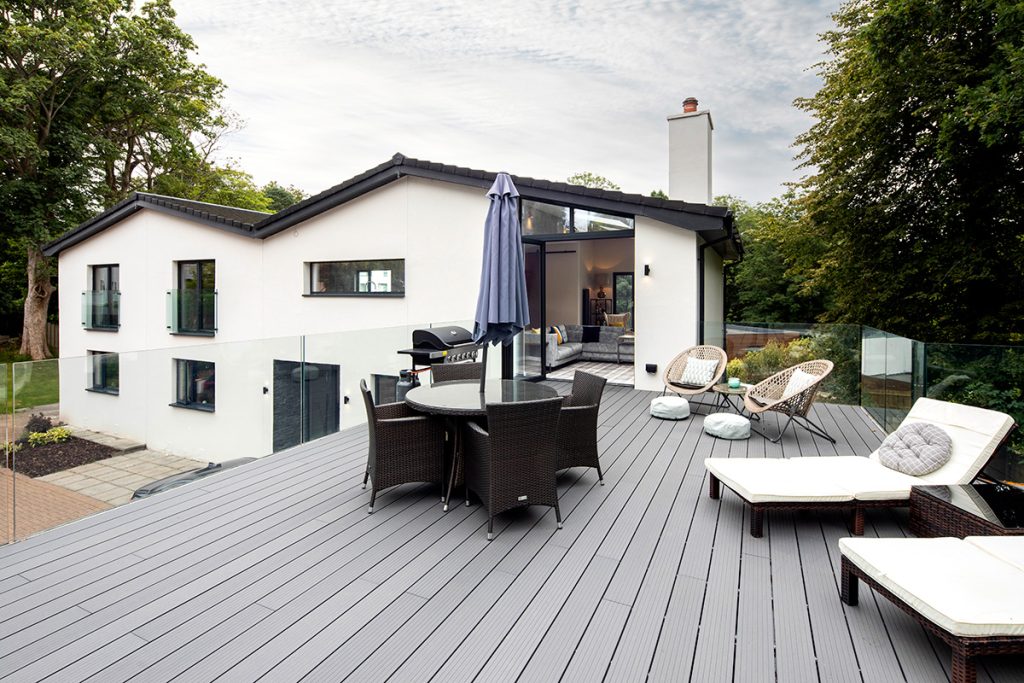
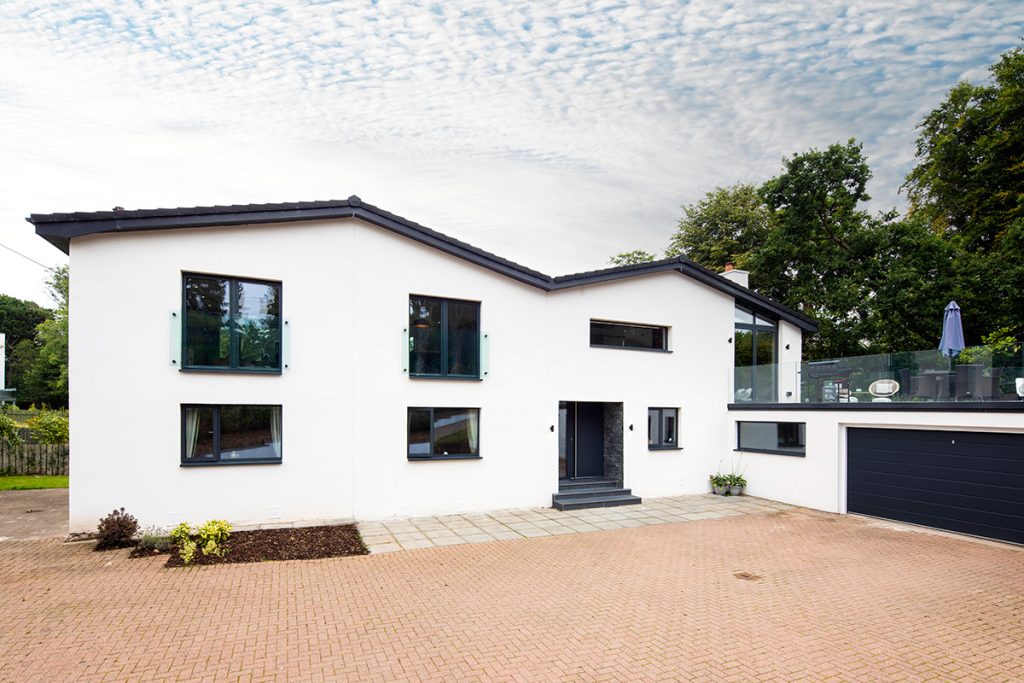
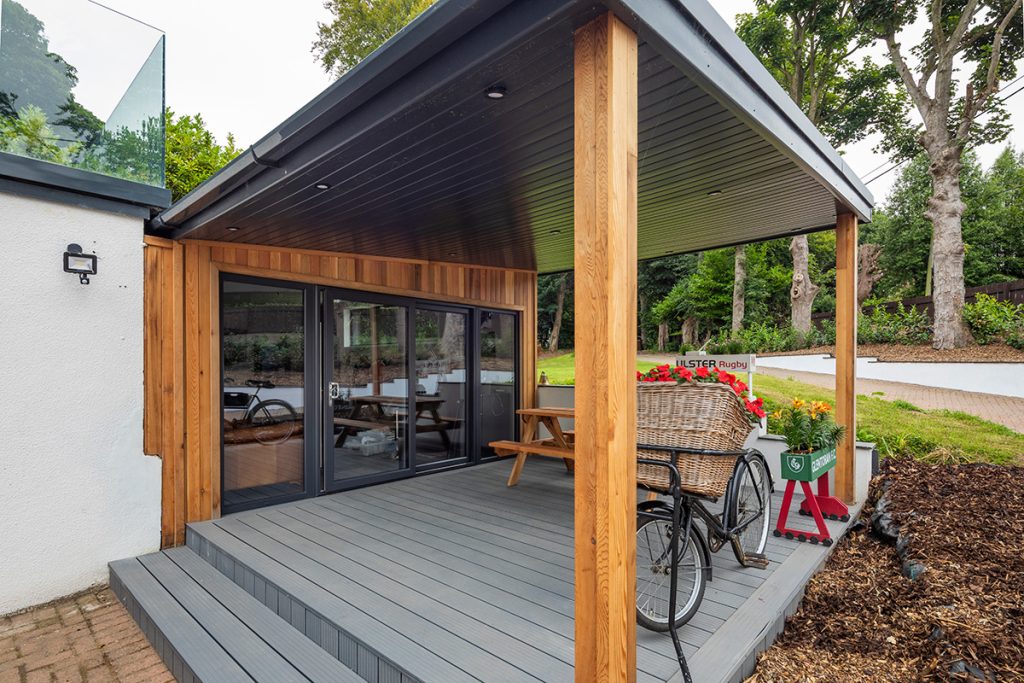
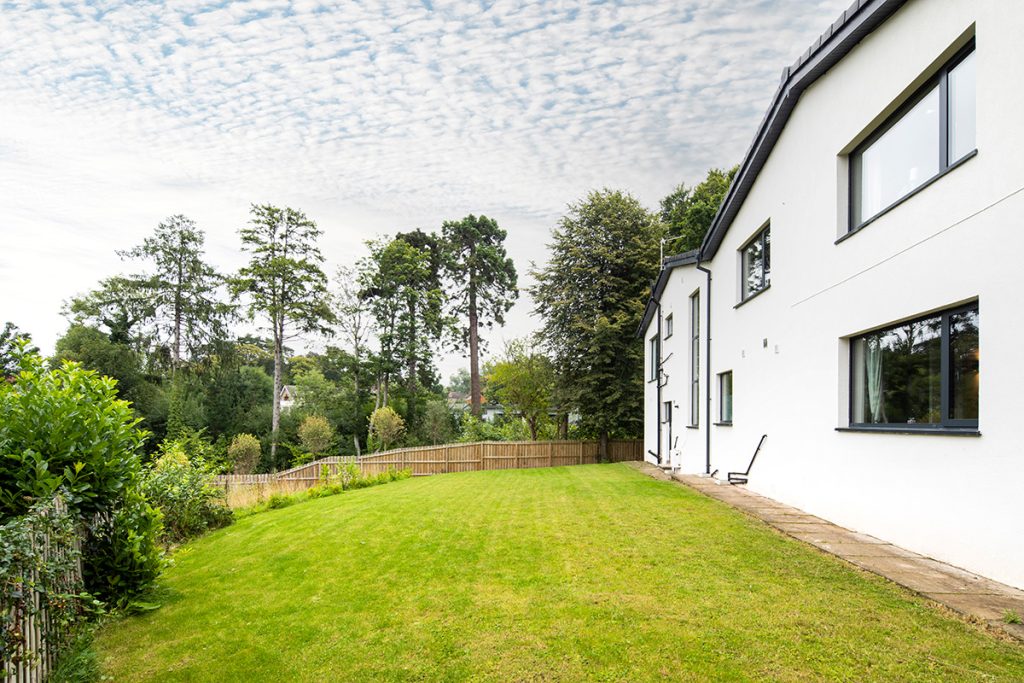
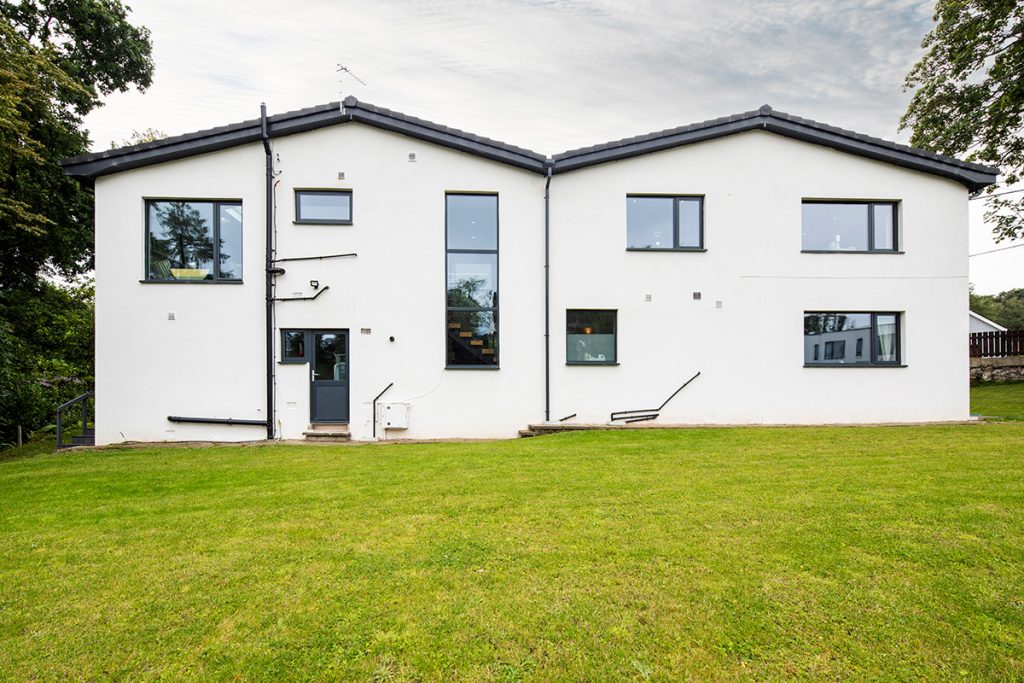
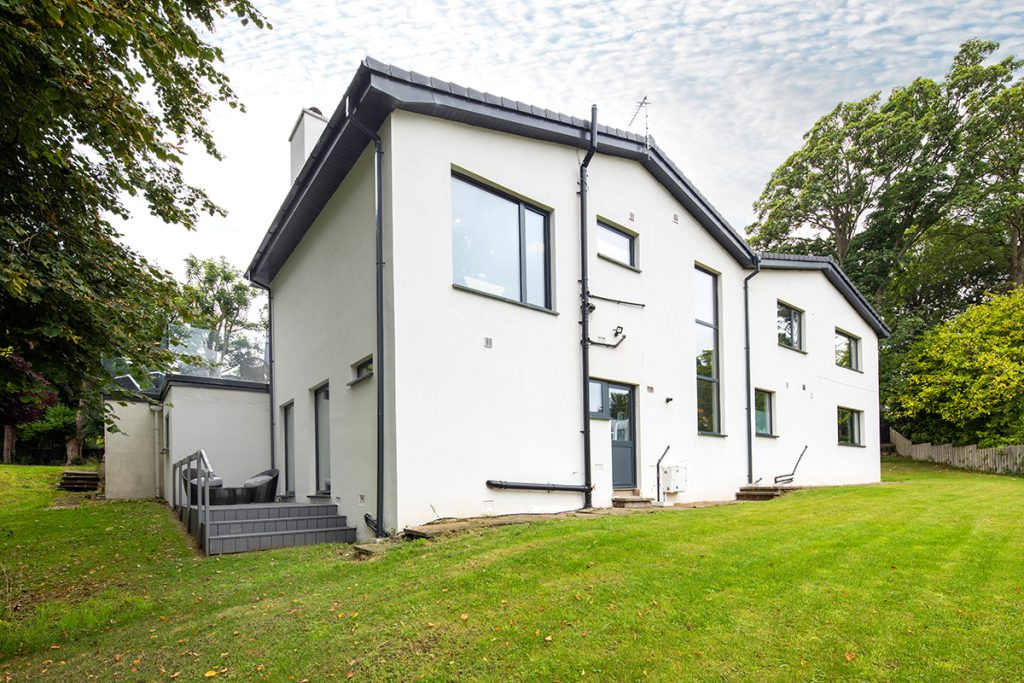
Collaborating with an Architect
To bring their vision to life, Allison and her family decided to collaborate with an architect recommended by their estate agent. The architect’s initial proposal was to take advantage of the house’s south-facing location. This involved moving the living space to the ground floor in an open-plan configuration with bifold doors and adding an extension over the existing concrete carport.
Navigating the Planning Process
The renovation journey began with the submission of the first planning application. It included detailed reports, such as a newt report and an arboretum tree report. However, the planning process turned out to be more challenging and less communicative than expected, especially when compared to the family’s prior experiences with renovations in England.
Allison expresses her frustration: “We were bewildered by the lack of visits from planning officers and the lack of communication about any issues they might have with our plans. The architect was also not very participative in getting any action from the Planning Department.” After a year of waiting, they decided to take matters into their own hands.

A Second Planning Application
Dissatisfied with the progress of the initial planning application, Allison and her family decided to submit a second application. This time, they proposed keeping the original shell of the house unchanged, meaning no extension, while renovating the interior to maintain the living space on the first floor. Their attention to detail was evident in the plans, which included a panoramic window strategically positioned in the kitchen to capture the view without overlooking neighbors.
Unexpectedly, a visit from a planning officer followed the second application, revealing that the internal renovations could have proceeded without planning department involvement. Remarkably, the fate of the original planning application remains uncertain, as they never received a response.
Enhancing Comfort and Efficiency
One of the priorities during the renovation was to improve the house’s insulation. The existing structure was poorly insulated, and many of the radiators were inefficient. This led to the decision to install a new heating system and rewire the entire house to accommodate the changes in electrical points.
Both original fireplaces, old gas fires, were decommissioned and blocked up. They were replaced with contemporary radiators that not only provided ample heat but also added aesthetic appeal to each room. Natural ventilation, coupled with fans in all bathrooms, ensured comfortable living, and a remote-controlled kitchen cooker hood contributed to a modern and convenient atmosphere.

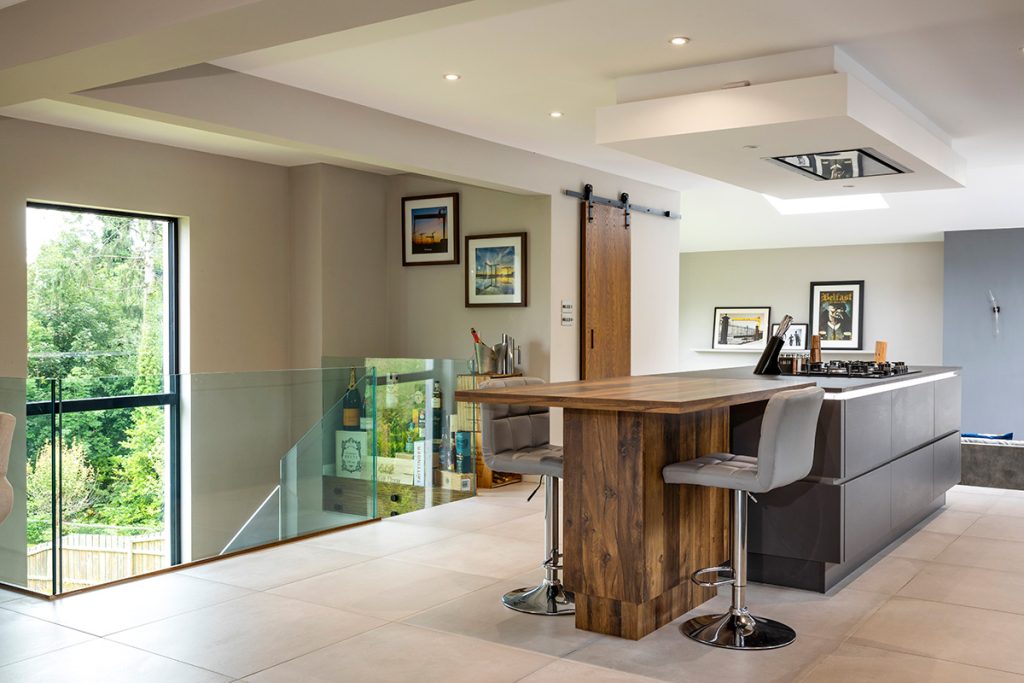
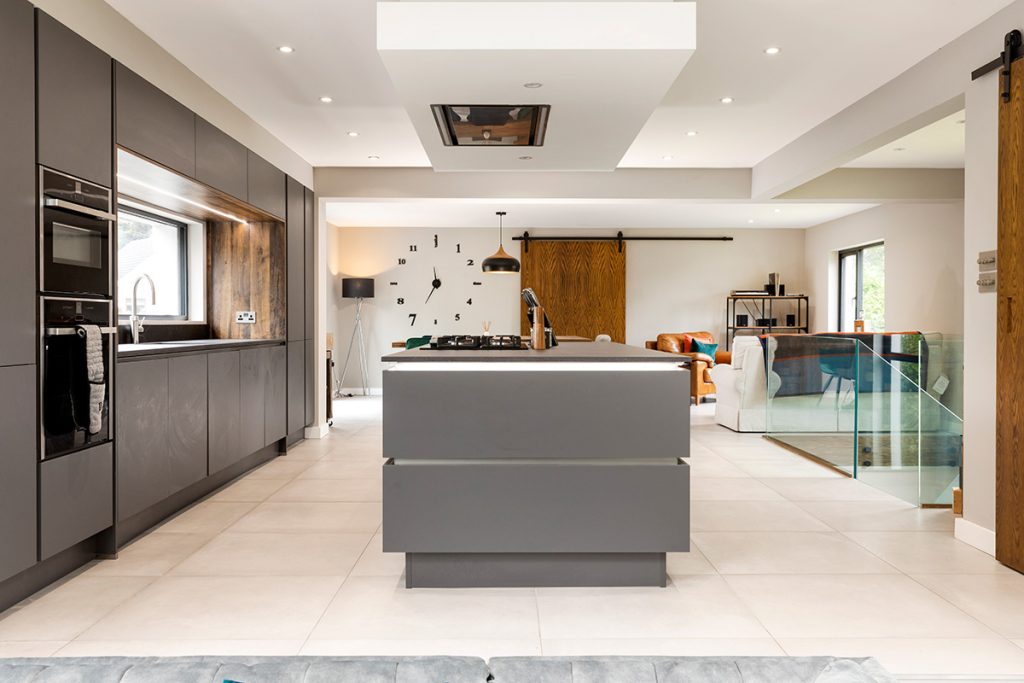
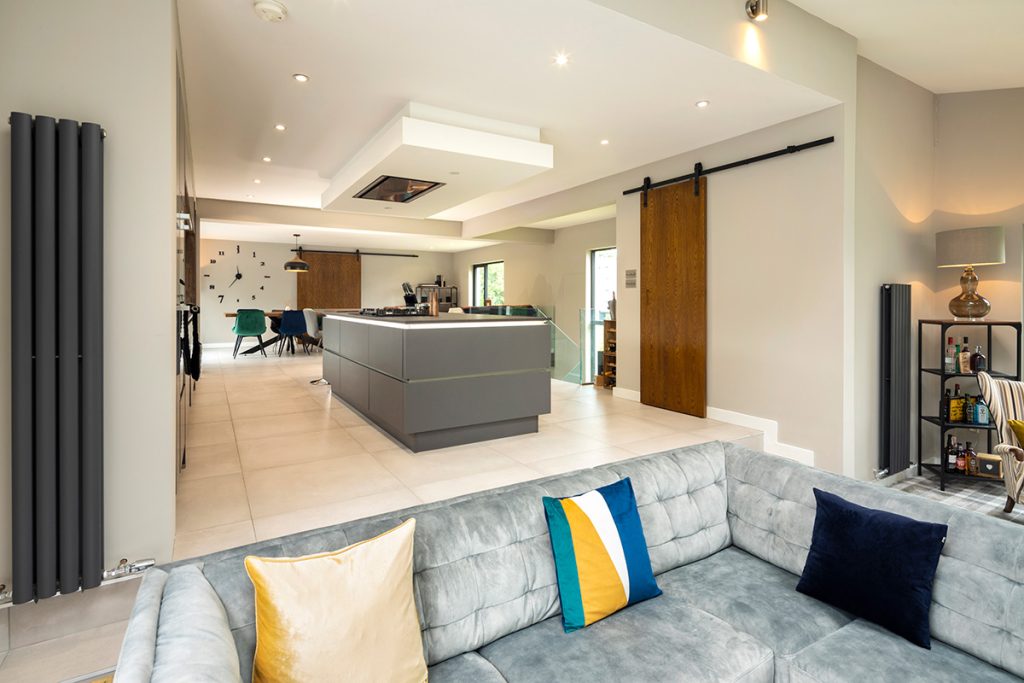
The Transformation Unfolds
Internally, the renovation involved removing all walls on the first floor, transforming the open-plan layout from concept to reality. Some modifications were made to the architect’s design, including downsizing the downstairs bathroom and adding a WC upstairs. The original staircase was completely removed, and part of the upstairs landing was adjusted to accommodate the newly designed open staircase.
To maximise natural light, a three-framed long window was added to the rear of the property, where the new staircase would be positioned. Every other wall was replastered, and the top of the original garage was transformed into a spacious decking area using composite decking, complete with a glazed balcony. This area now enjoys plenty of sunlight, making it a south-facing sun trap.
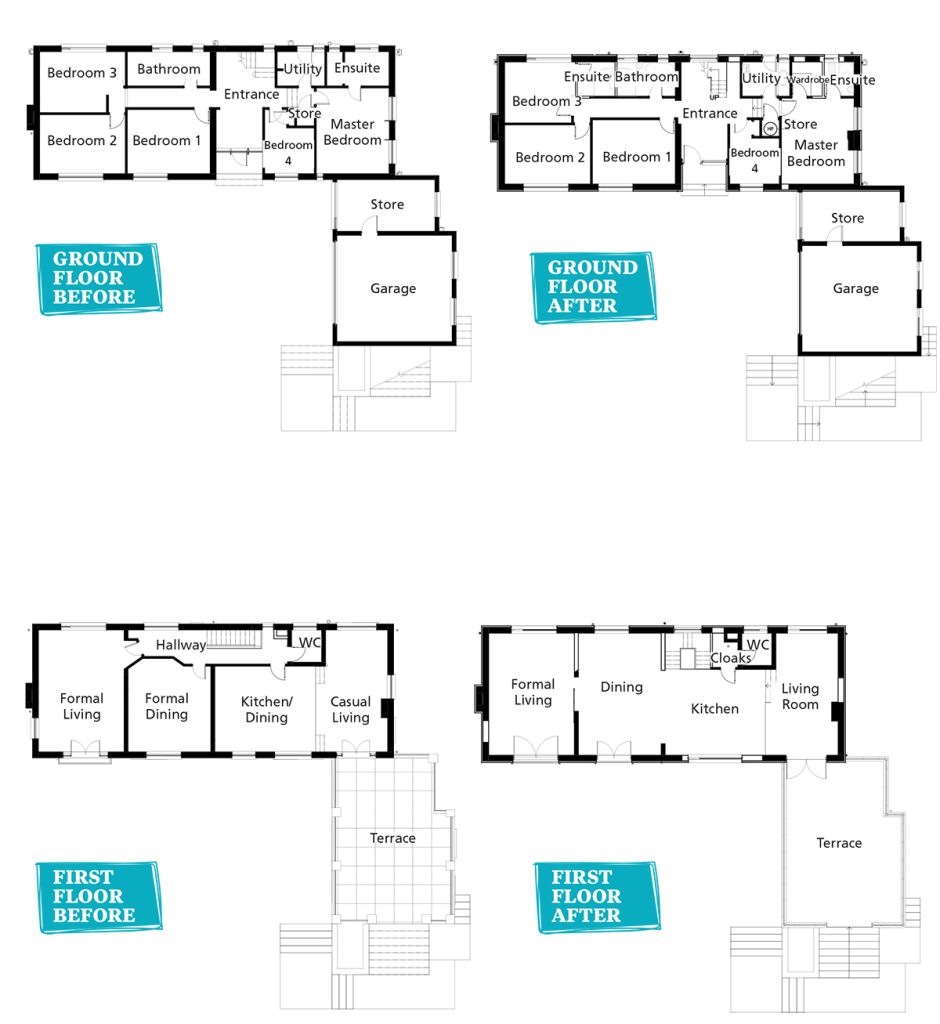
Managing the Project
Originally, Allison and her family had hoped the architect would manage the project. However, due to communication issues with the planners, they decided to take charge themselves. They obtained tenders from builders, but the costs far exceeded the architect’s estimate. They eventually chose Jim, a local builder known to their family, who assured them that the project could be completed within their budget of £200k.
Jim was entrusted with managing the project, with Allison providing input and direction. A verbal agreement was established, clarifying costs and material sourcing. Jim handled the procurement of building materials, while Allison managed the selection and purchase of bathroom fittings, the kitchen, barn doors, and the staircase.
Collaborating with Skilled Trades
The renovation project involved several tradespeople, including tilers, electricians, plumbers, and joiners, who worked on-site for approximately eight weeks. They were paid in a lump sum at the end through Jim. Allison was deeply involved, visiting the site almost daily and engaging with the tradesmen to discuss requirements and make necessary adjustments. She relied on comprehensive plans and images to effectively communicate her vision.
The kitchen design was particularly important, and Allison used software to visualise the space before making decisions. Her kitchen designer provided valuable guidance, helping achieve the desired finish. To optimise storage, an undercounter freezer was added to the kitchen, and a double-height larder freezer was placed in the utility room on the ground floor, following the kitchen’s style.

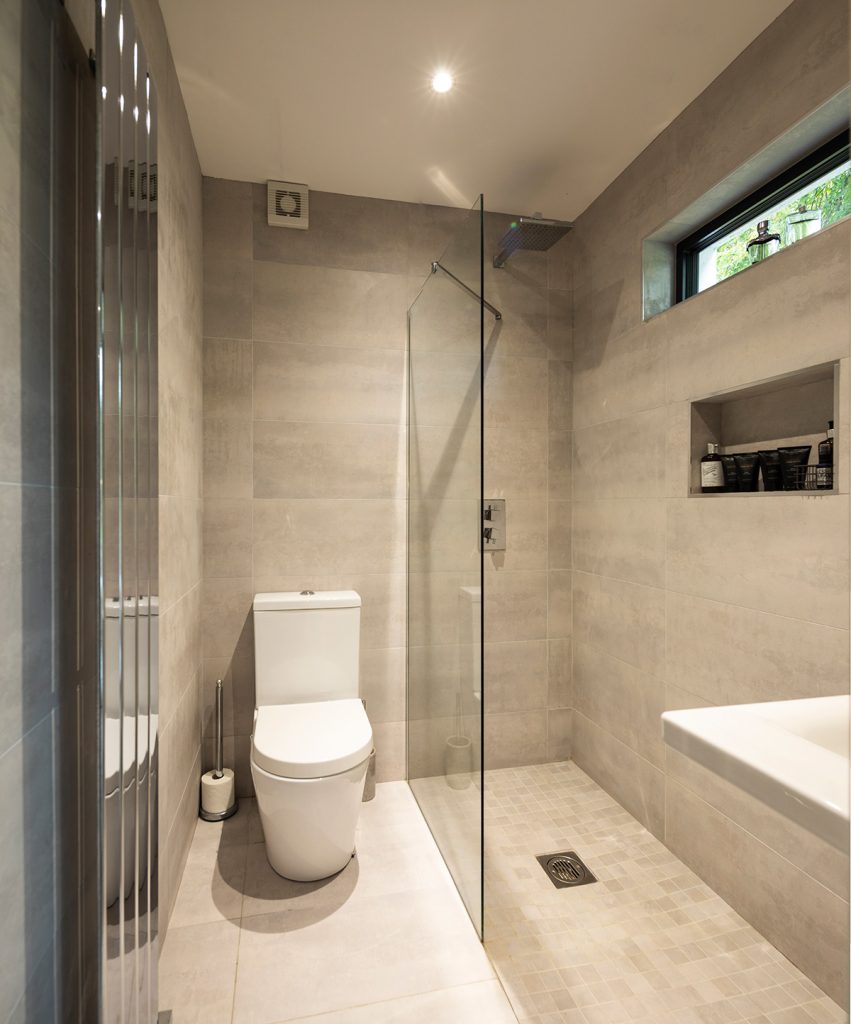
Masterful Bathroom Redesign
The bathrooms underwent significant changes. The main bathroom, featuring a 1970s-style jacuzzi and multi-jet shower, was gutted. A portion of its square footage was reallocated to create an ensuite for a rear bedroom. The master bedroom’s large ensuite was transformed into a modern wetroom with a walk-in dressing room. Consistency was maintained by using the same tiles throughout the bathrooms, creating a neutral and timeless look.
Allison shares her inspiration: “Most of my inspiration came from images I sourced online, mood boards, and also from visiting showrooms. I tried not to go too quirky and keep it neutral. I would walk around showrooms with a folder and measuring tape to make sure mirrors, sinks, etc. would fit.”
Unexpected Delays and Challenges
While the project had its smooth moments, it also faced unexpected delays and challenges. Originally estimated to take six to eight months, the renovation extended to a year due to unforeseen issues. One major setback was the discovery that the roof needed complete replacement despite initial assessments suggesting otherwise.
Allison reflects on the situation: “Once it was clear the roof had to be removed and replaced, we had to vacate the building and ended up living elsewhere.” Fortunately, the roofers acted swiftly to address the problem. The renovation also encountered weather-related delays, especially during the extensive silicone render application on the exterior.

A Brighter Future
Despite the challenges, the renovation project was a resounding success, both inside and out. The removal of the original steps around the garage uncovered a large amount of displaced earth, which was repurposed to create a spacious rear garden. This garden, enjoying sunlight throughout the day, has become a haven of relaxation for the family.
Allison and her family now enjoy a home that exceeds their expectations, with improved insulation, efficient heating, and modern design elements. Their journey of transforming an “up

Q&A with Allison
Would you do it again?
Yes, it was challenging but having a healthy renovation budget takes the pressure off which I’m sure is not a luxury many people have. We’ve just bought our retirement home, so another renovation beckons already!
What is your single piece of advice for a budding renovator?
Whatever your builder tells you, be that time or money; double it. Also, in hindsight (a wonderful thing) my husband is now of the opinion that we should have knocked the original house down and built new. We would have saved a fortune on VAT because a zero rate VAT applies to new builds.
Favourite design feature?
The best thing we did from a design point of view was keep the living area upstairs. Because the property is in a dip, it’s darker downstairs than upstairs.
One of my most favourite things in the house is the panoramic window in the kitchen. It gives a wonderful view of the front garden and long driveway. I can see the postman and other visitors coming.
I understood from Jim it was a headache to get right, as he had to work with the kitchen fitters to ensure it was at worktop level but even he agrees the end result is a triumph.
The windows and doors in general are fantastic. Every door is tilt and turn, including the doors in the master bedroom. The patio door at each Juliette balcony on the top floor opens inwards. Overall, it all feels light, airy and bright.
What would you change?
We installed a hot water tap, and to be honest I could do without. I’ve managed to burn myself on it a number of times. I’m just a regular cook, and even though it could help when reselling, I don’t really need it.
What was your biggest splurge?
The glazed balcony and rooftop decking above the garage; but it was so worth it.
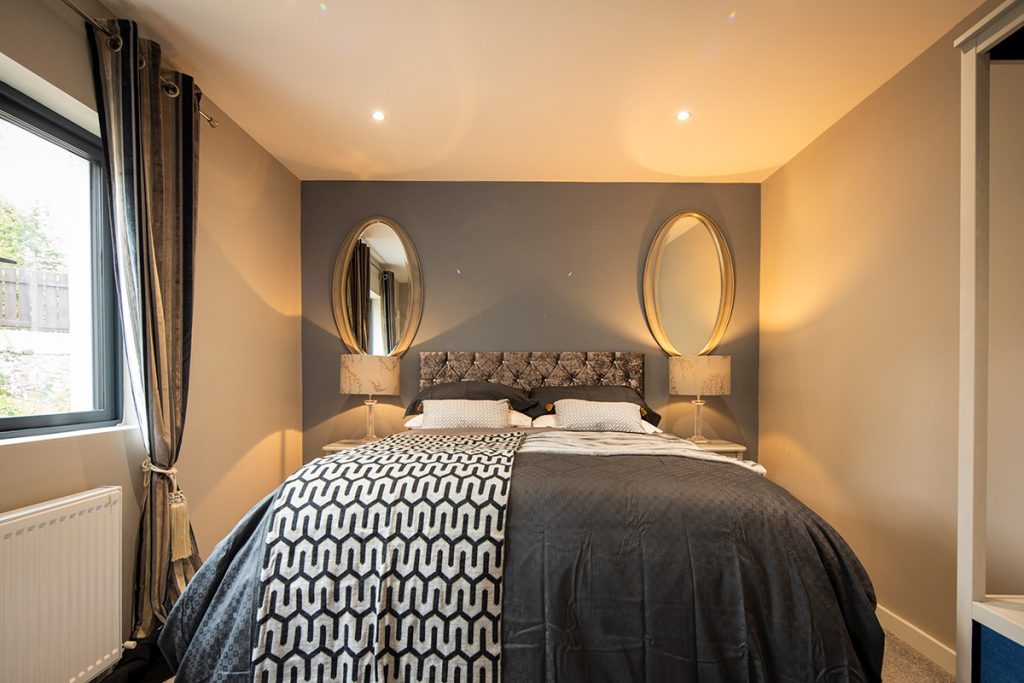
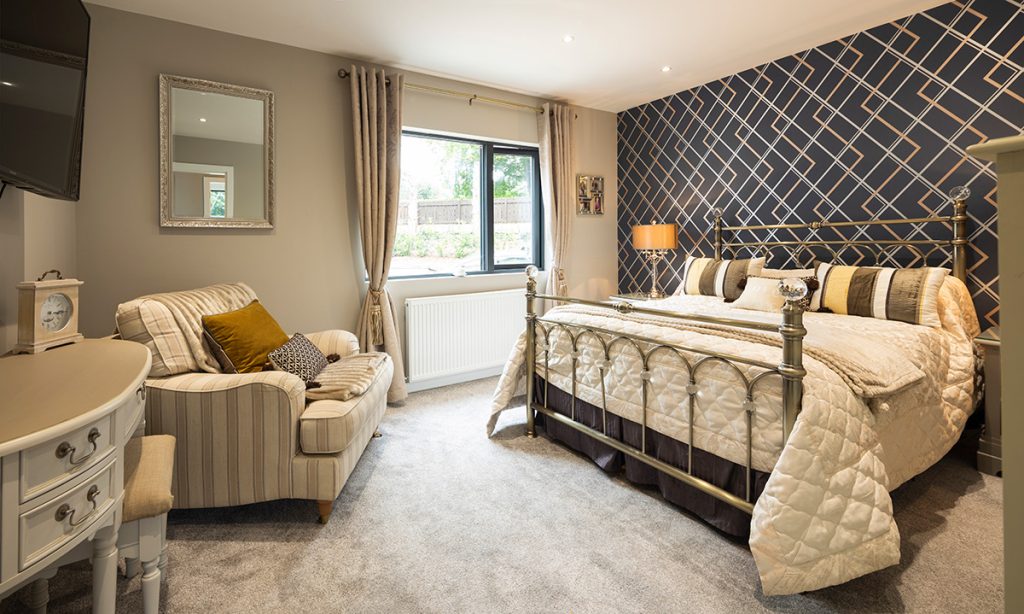
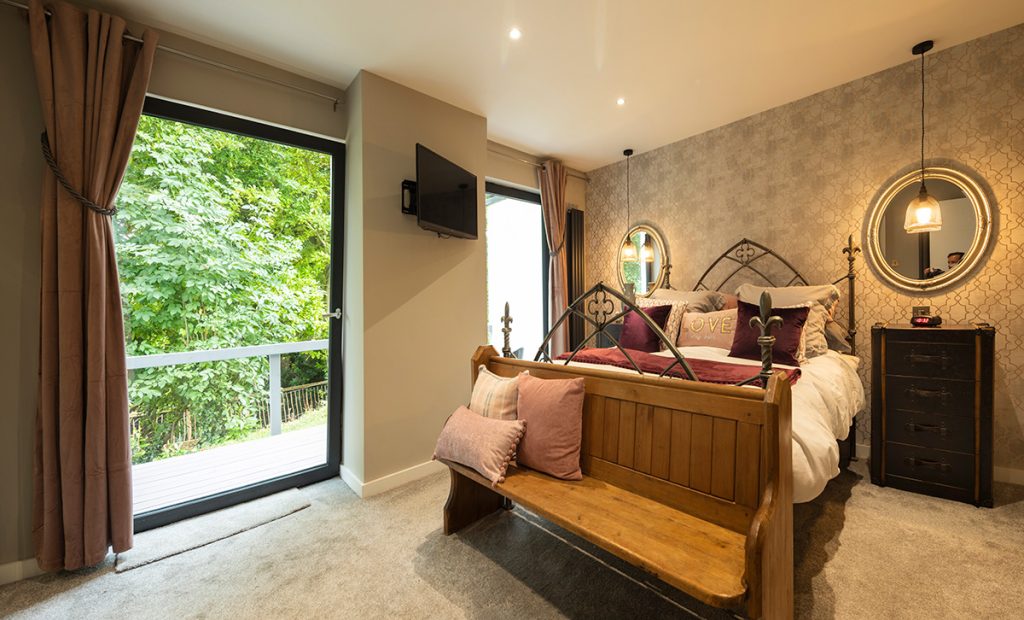
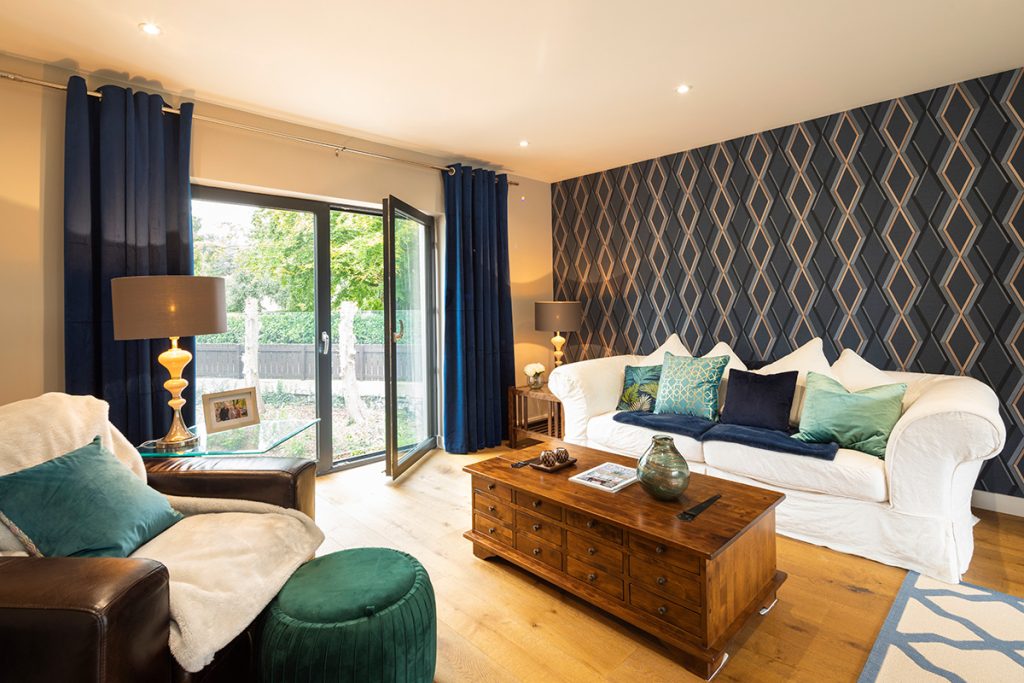
Allison’s Tips
Be on site daily. This is a must. I made decisions and alterations, during construction, usually following a brief consultation with either the builder or tradesman, which would not have been possible had I not been on site daily.
Prepare for the unexpected. Once you begin to peel back the structure of an old building there are bound to be some things that come to light that require attention, and usually bring in additional costs.
Listen to your builder/tradesman. One thing I used to say if an issue arose was “what would you do if it was your property?” and following their advice, acted accordingly. My husband always says “if you pay for expert advice you might as well listen and take it on board”.
Check prices online. I spotted the bath I wanted on the high street and was quoted £1,200, whilst the exact same bath online was £500 with £50 delivery to NI… a no brainer. If you are purchasing four sink taps, check the prices on reputable websites. The waterfall taps I wanted were £159 in a bathroom showroom locally but online the same tap was £59. When you are making multiple purchases of the same product, this matters to your bottom line.
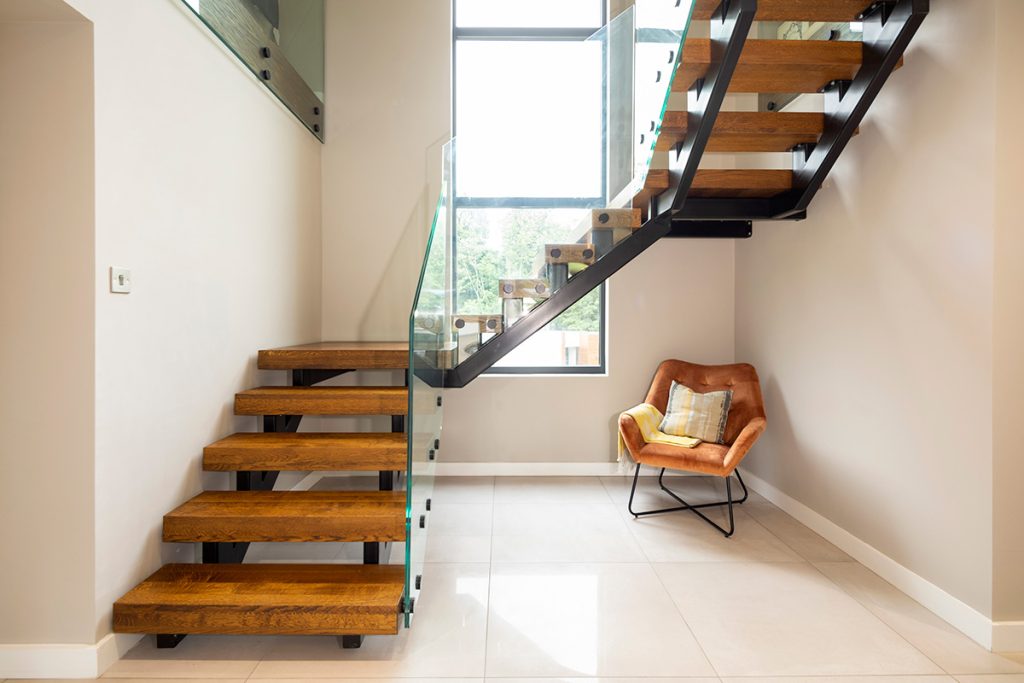

Suppliers
Stairs and barn doors
MD Manufacture, mobile 07518 028655
Kitchen
Creative Living, creativelivingni.co.uk, tel. 9031 2083
Windows and front door
Carrolls Glass, carrollsglass.co.uk,
tel. 9048 1116
Builder and tradesmen
Builder; Jim Tipping. Tiling by Ollie and Martin, Electrics by Craig Tweedie, Plumbing and Heating by Noel McMasters
Tiles
Armatile, armatile.com, tel. 9068 2752
Garden room
Posh Sheds NI, poshshedsni.com
Photography
Paul Lindsay, paullindsayphoto.co.uk
ROI calling NI prefix with 048, mobile prefix with 0044 and drop the first 0
Timeline
Sep 2017
First planning application
Aug 2018
Revisit plans
Sep 2018
New planning application
Nov 2018
Planning granted
Jan 2019
Moved out and renovation start (house gutted)
Jan 2020
Moved in




